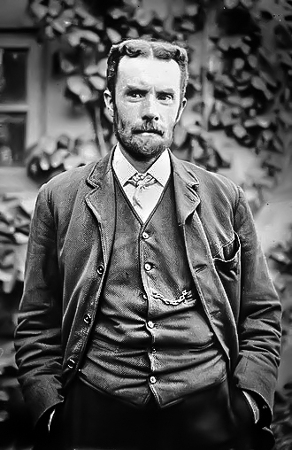Heaviside did much to develop and advocate vector methods and the vector calculus. Maxwell's formulation of electromagnetism consisted of 20 equations in 20 variables. Heaviside employed the curl and divergence operators of the vector calculus to reformulate 12 of these 20 equations into four equations in four variables (B, E, J, and ρ), the form by which they have been known ever since (see Maxwell's equations).
Less well known is that Heaviside's equations and Maxwell's are not exactly the same, and in fact it is easier to modify the latter to make them compatible with quantum physics. The possibility of gravitational waves was also discussed by Heaviside using the analogy between the inverse-square law in gravitation and electricity.
He invented the Heaviside step function and employed it to model the current in an electric circuit. He was the first to use the unit impulse function now usually known as the Dirac delta function. He invented his Operational calculus method for solving linear differential equations. This resembles the currently used Laplace transform method based on the "Bromwich integral" named after Bromwich who devised a rigorous mathematical justification for Heaviside's operator method using contour integration. Heaviside was familiar with the Laplace transform method but considered his own method more direct.
Heaviside developed the transmission line theory (also known as the "telegrapher's equations"), which had the effect of increasing the transmission rate over transatlantic cables by a factor of ten. It originally took ten minutes to transmit each character, and this immediately improved to one character per minute. Closely related to this was his discovery that telephone transmission could be greatly improved by placing electrical inductance in series with the cable. Heaviside also independently discovered the Poynting vector.
Heaviside advanced the idea that the Earth's uppermost atmosphere contained an ionized layer known as the ionosphere; in this regard, he predicted the existence of what later was dubbed the Kennelly−Heaviside layer. In 1947 Edward Victor Appleton received the Nobel Prize in Physics for proving that this layer really existed.
 Oliver Heaviside (18 May 1850 ➙ 3 February 1925) was an English self-taught electrical engineer, mathematician, and physicist who adapted complex numbers to the study of electrical circuits, invented mathematical techniques for the solution of differential equations (equivalent to Laplace transforms), reformulated Maxwell's field equations in terms of electric and magnetic forces and energy flux, and independently co-formulated vector analysis. Although at odds with the scientific establishment for most of his life, Heaviside changed the face of telecommunications, mathematics, and science for years to come.
Oliver Heaviside (18 May 1850 ➙ 3 February 1925) was an English self-taught electrical engineer, mathematician, and physicist who adapted complex numbers to the study of electrical circuits, invented mathematical techniques for the solution of differential equations (equivalent to Laplace transforms), reformulated Maxwell's field equations in terms of electric and magnetic forces and energy flux, and independently co-formulated vector analysis. Although at odds with the scientific establishment for most of his life, Heaviside changed the face of telecommunications, mathematics, and science for years to come.
![]() Heaviside coined the following terms in electromagnetic theory. . .
Heaviside coined the following terms in electromagnetic theory. . .
![]() Return to Radio Pictures
Return to Radio Pictures
![]() Return to MCRN Home
Return to MCRN Home